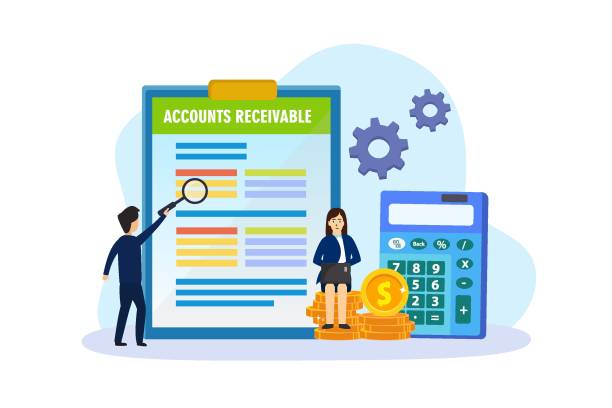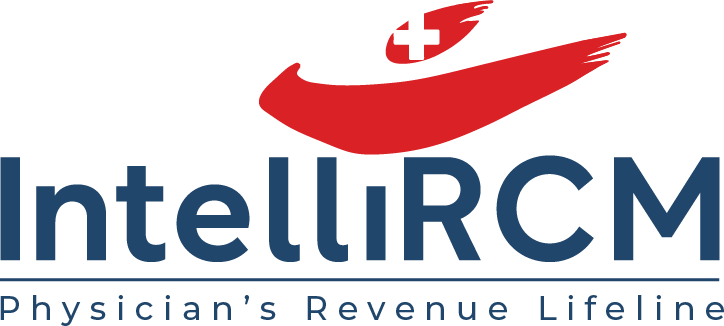
By intellircm 10th Oct 2022 Blog
Accounts receivable (A/R) in the healthcare industry is the lifeblood of the facility. Revenue keeps the bills paid and the doors open.
It's vital that staff keep tabs on all A/R processes to see if payers and patients make payments on time. That way, there isn't an interruption in cash flow for the business. Unpaid account receivable adversely impacts the facility's revenue cycle. Performing A/R analysis and summaries is essential to see who owes, how much they owe, and who’s past their due date.
A revenue cycle management solution will help your facility streamline these processes. Let’s evaluate what that means for your facility.
What is Account Receivable (A/R)?
A/R refers to the area of your accounting department that handles bills, invoices, and statement payments made and owed to the facility.
As operating costs continue to rise and patients with medical plans increase, managing your facility's A/R becomes one of the most critical tasks. It's literally the lifeblood of your clinic or medical office or facility or hospital.
What are the Objectives of A/R Management?
The goal of A/R management is to keep cash flowing through the business while minimizing the cost and collection period. That's why it's vital to have an uncompromising standard procedure for managing A/R from start to finish.
Why A/R Services are so Important
Every medical institution must track its A/R accounts to keep the cash flowing through the business. As a result, many healthcare facilities utilize expert medical billing services to track, process, and claim their A/R.
Here is why Account Receivable (A/R) is critical:
Steady Stream of Revenue
One thing that keeps the business going is the clinic's steady stream of cash flow. The success of any healthcare facility is whether they can manage their A/R well.
Payments are Made Faster
The time a claim is processed differs from federal to state organizations. A medical billing expert can shorten the time between when a patient's account gets charged and when the patient pays the balance. Your staff can also check for outstanding charges and outline a strategy to ensure payments get made.
No Claim Left Untouched
Often, delay happens because the insurance company doesn't receive the claim when sent. It might also be due to a diagnosis-related group (DRG) mismatch for an inpatient claim.
That is where follow-up services pay off. They investigate why the claims are unpaid, with things like denial appeals and back-up documentation (in the case of a DRG mismatch).
How to Calculate Account Receivable?
Measurement of Account Receivable is called “Days in A/R” which is the average time it takes to collect a bill. The formula to calculate this is:
Days in A/R = Total A/R ÷ Average daily charge.
To get the average daily charge, the formula is:
Total charges for the last 182 days ÷ 182 days = Average daily charges.
You will use 182 days to represent a "true" six-month period. However, you can calculate these ranges using 30, 60, 90, or even 120 days. Use calendar days, not business days, and make sure you compare like amounts (i.e., total number over charges over 90 days divided by 90).
How to Maintain High Account Receivables in Revenue Cycle
Various factors go into maintaining a high A/R. An outstanding account receivable will help spot the situations relating to your cash flow and fix them where necessary.
Patient balance is a factor that A/R directly impacts. Sometimes the patient might be the one that should pay. That requires an additional process, like sending the patient a statement and then following up.
However, the problem is that patients don't always understand why they need to pay and assume that the doctor’s office, facility or the hospital hasn’t billed their insurance plan. Effective A/R management helps your business manage these scenarios.
How to Reduce A/R Days — Tips from the Experts
Here’s what the experts say about how to reduce A/R days:
Train Your employee on the Latest A/R Techniques
Untrained employees cost companies more than trained employees. If employees aren't well trained, they cannot code very well. That leads to errors and loss of revenue. The cost to train employees on coding techniques is high, but it’s worth it because it saves time and money in the long run.
Automating Your A/R Department
Manual A/R processes are time-consuming and daunting. With advancements in technology, the software is now available to streamline these processes.
Not only does software streamline the process, but it is also more accurate and efficient than the manual process. Software also results in the reduction of operating costs and enhances the level of service offered to the patients.
Practice Denial Management
Identifying the root cause for claim denials is an essential process in A/R that your accounting department needs to master very well. They must be able to analyze the reason for the rejection, correct any errors, and refile promptly. Also, look to see if any patterns in the denials are present and find a solution to tackle them in the future.
Timely Follow-up
Follow-up is a critical process in A/R. As the old saying goes, "Money is in the follow-up." Successful follow-up policies ensure that employees track claims and see which ones still require payment.
How to Improve A/R Management in Healthcare
Looking to streamline some of the tasks of your A/R professionals? Here's how to improve A/R management in the healthcare industry:
Manage Patient Expectation
No one likes unexpected financial surprises regarding paying more than expected. Communicating the financial obligation to your patient upfront is essential so that your patients don’t get a bill they were not anticipating or for more than they thought it would cost.
Provide exceptional communication from the moment they schedule an appointment. Ensure your patients know your billing process, estimated costs, and available payment options. Reach out to them often. You can do this via email or phone, whatever is most convenient for the patient (and yourself).
Offer Flexible Payment Options
You need to tailor payment options to the demographic of patients you treat regularly if you want to be successful at collecting payments. For instance, younger patients are okay with electronic billing and payment. However, your older patients will most likely ask for a paper statement and where they can mail their checks to. Understand your patients and know which payment option is convenient for them.
Check with the Patient Insurance Company
Streamline the check-in process. You can do this when patients schedule an appointment. Before they arrive, check with their insurance to:
- Check for coverage
- Verify eligibility of treatment
- Check for patient copays and deductible requirements
After verifying this information, notify the patients before the appointment. That way, you will be on the same page and better understand what will happen during (and as a result of) the appointment.
Outsource Your Billing
As a physician, you shouldn't have to worry about many facets of your practice. Accounts receivable is one of those things. Reduce stress and ensure effective management of your facility's A/R department. Outsource your medical billing to a reliable A/R solution you can trust.
IntelliRCM for Managing Accounts Receivable in the Healthcare Industry
Automating areas of your A/R department will reduce the number of days it takes to complete what were once time-consuming tasks using manual processes. Outsourcing your A/R, billing and coding, and revenue cycle management using an industry-leading end-user software system is the most cost-effective way to manage your accounts receivable.
Looking for more information about outsourcing some of your A/R using automation? Give us a call today at (281) 302-9659 or contact us to speak to one of our friendly professionals.





